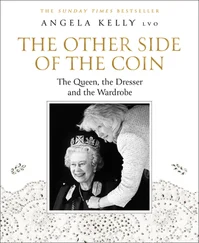The identity of Margaret Maultasch, the Countess of Tyrol, remains shrouded in legends. It is impossible to call any information about her absolutely reliable. Therefore, any materials related to the life of the ruler of Tyrol have always aroused great interest. Needless to say, the historical novel of the German writer of Jewish origin Lion Feuchtwanger, The Ugly Duchess , first published in 1923, did not only attract the attention of several generations of readers to the story of the countess and of Tyrol at her time, but also made them believe in the reality of the image of the ugly but intelligent woman with an unfortunate fate whom the author described in his book. But was Feuchtwanger’s Margaret similar to her historical prototype? Was Tyrol at the time of her ruling the way the writer presented it? Can The Ugly Duschess be believed, and if so, to what extent?
In a historical novel, the historical truth is always combined with fiction, and the real historical figures coexist in the text with fictional persons. This is a difficult genre to write in, and it has always been chosen by very few writers. The Ugly Duchess was the first historical novel by Lion Feuchtwanger, but fortunately not the last one.
Any historical novel needs to be based on reliable historical sources. While working on The Ugly Duchess , Lion Feuchtwanger definitely used the three-volume work by Josef Egger Geschichte Tirols von ältesten Zeiten bis in die Neuzeit , published in Innsbruck in 1872. This is proved not only by the same order of the events described, but also by the fact that the writer borrowed some episodes from Egger’s story word-for-word.
The writer uses Margaret’s image to show the advent of a new age in Tyrol, the gradual transition from medieval way of living to early Renessaince. It is Margaret that Feuchtwanger credits with everything which is good and progressive in this mountain land. The author of The Ugly Duchess exaggerates the ugliness of his heroine’s appearance, endowing her with extraordinary intelligence instead, and showing her as a champion of progress and humanity. This is how Margaret is first presented in Feuchtwanger’s novel: “She looked older than her twelve years. Her thick-set body with its short limbs supported a massive misshapen head. The forehead, indeed, was clear and candid, the eyes quick and shrewd, penetrating and sagacious; but below the small flat nose an ape-like mouth thrust forward its enormous jaws and pendulous underlip. Her copper-coloured hair was coarse, wiry and dull, her skin patchy and of a dull greyish pallor.” A bit later in the book, the author says the following on the Tyrolean ruler: “God had deprived her of feminine charm so that she might sink all the woman in the ruler.” Feuchtwanger’ Margaret is a strong-willed person, who fought all her life against her own ugliness, the greed of her subjects, and takeover attempts of her neighbors; who fought for the happiness of her people, her Tyrol, and for her own happiness as a woman.
And now let us turn to the historical source – the three-volume work by Egger Geschichte Tirols von ältesten Zeiten bis in die Neuzeit , which the author of The Ugly Duchess resorted to when he was writing his book, and see what the historian says about Margaret Maultasch: “As time went by, Margaret more and more often expressed her dissatisfaction with her spouse, and the Tyrolean barons – with the domination of Luxembourg. Both the legends and the writings of historians portrayed Margaret as very unattractive, both physically and spiritually. While she was not totally ugly, she would, nevertheless, never get an award for beauty, for, according to trustworthy testimonies, she had a big, wide mouth disfiguring her face, which, as legend has it, earned her the nickname ‘Maultasch’. Neither could she be considered the ideal of a virtuous woman. Of course, her alleged carnal excesses and cruelty towards her lovers might as well be fictional, but it is undoubted that her penchant for sensual pleasures by far surpassed the boundaries of natural propriety. John could not sufficiently satisfy this inclination. Even as he entered adolescence, Margaret remained childless.” The same Joseph Egger speaks of the political role played by Margaret in Tyrol. During her reign, while she was still married to her first husband, John Henry (1330—1340), she, judging from the historian’s writings, was far from independent politically: “She was deprived of any influence on management, and Bishop Nicholas of Trent ruled the country.” During her marriage to her second husband, Ludwig (1343—1361), as well as during a short period after his death and her own abdication of power (1361—1363), Margaret again failed to show herself to be a strong and independent ruler. Egger describes her as a “weak” ( schwache ) and “indecisive” ( wankelmütige ) woman, who, from his point of view, could not hold power and was forced to give it up. Margaret’s great desire to develop Tyrolean cities and trade, to promote the prosperity of the people, described by Feuchtwanger, is not confirmed by Joseph Egger. Indeed, such aspirations could really be observed at that time, but it was not the ruler of Tyrol who was engaged in making those visions a reality, but completely different people.
Neither the violent death of Margaret’s husband Louis, nor the similarly violent death of her son Meinhard, described in Feuchtwanger’s The Ugly Duchess, correspond to the historical truth. Both of them died natural deaths, and as to Ludwig, the Countess of Tyrol lived quite happily with him to the end of his life. The political fate of Margaret was different in reality as well: having ceded power to Rudolf IV Habsburg, the historical ruler of Tyrol left for Vienna, where she spent her last days honoured and protected by the Imperial court. According to Feuchtwanger, Margaret lived the rest of her life in modest conditions on a deserted island, in the company of a single maid.
It is obvious that the description of the ruler of Tyrol by Egger has very little in common with Feuchtwanger’s description, and as to what she really was like, it still remains to be found out. In general, historians point out that the information about that era is too scanty, but the information that we do have allows us to judge about the personality of Margaret Maultasch only to a certain extent.
At the beginning of The Ugly Duchess , Feuchtwanger writes: “It had been manifestly proved that in Tyrol only he could rule whom the Tyrolese themselves wanted to rule. With mountains and valleys and passes God had so disposed it that no foreign power could overrun it by violence.” At the end of his historical novel, describing Margaret’s decision to cede Tyrol to Habsburgs, the author leaves all the prompousness aside: “Schenna thought this proposal very advantageous. He had always preferred the gay, affable Austrians to the heavy, violent Bavarians.” That is how Tyrol lost its independence and became a part of the Austrian monarchy.
And what about Margaret? She, having left her lands, never came back to Tyrol either in the book or in real life.

Chapter Seven.
The “Bolzano Effect”
At first, they took away only the toilet. The explanation that it was only an innocent curtsey to the classic of modern art, the Dadaist Marcel Duchamp, didn’t help a bit; the work was ruthlessly impounded by the city authorities following a complaint from National Alliance activists. The toilet was a work by the Roman artists Eleonora Chiari and Sara Goldschmied, working under the pseudonym Goldiechiari. When a person approached it, the plumbing fixture would play Italy’s national anthem along with the sounds of flushing. The case came to trial, and the court ruled that the toilet did not insult either the anthem or the state of Italy, and it was returned to its place.
Читать дальше













